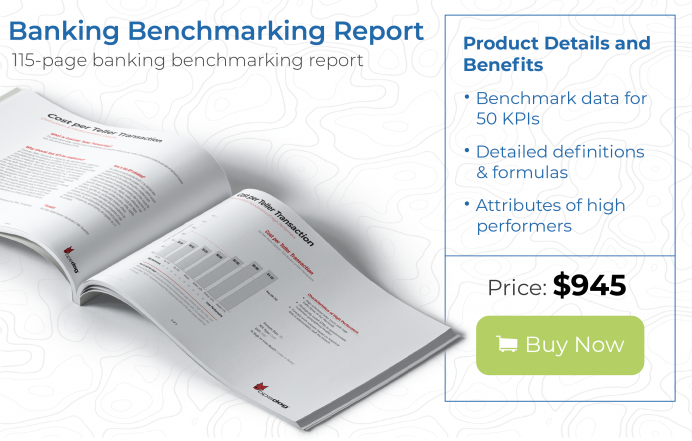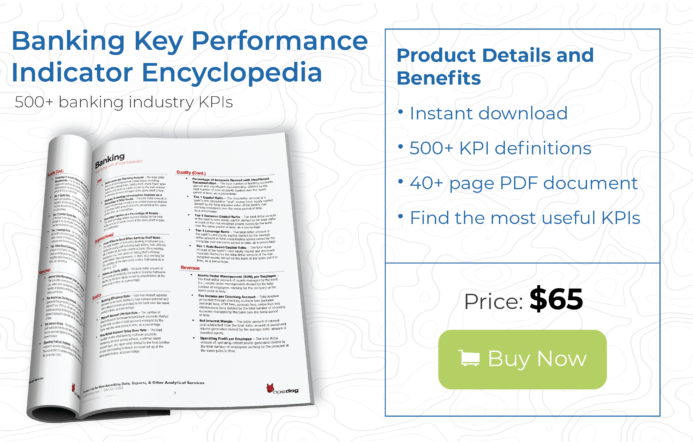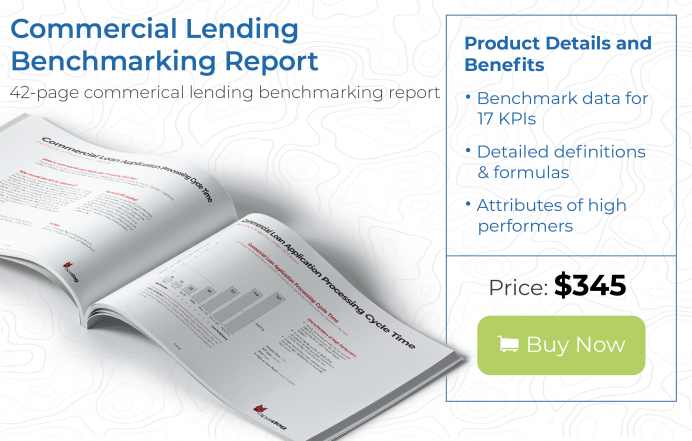To combat continuing low-interest rates and competition from fintechs, commercial and consumer lenders need to become as lean and mean as possible, all while keeping a close eye on macroeconomic factors that can negatively impact loan portfolios.
By establishing key performance indicators (KPIs), and tracking these key performance indicators for loans over time, you can improve your operational efficiency, boost productivity, and close more commercial and consumer loans while reducing costs.
What are Key Performance Indicators for Loans?
Key performance indicators for loans can be defined as various loan-related metrics that are used as measurements of success throughout the lending process.
Since lending typically generates a good percentage of a financial institution’s revenue, lending performance is one of the most critical areas of the institution to measure. Key performance indicators for loans run the gamut from metrics that measure how long it takes to close and fund a loan to loan processing staffing levels to predicting default rates. You can use KPIs to measure department and employee performance, revenue by product type, and even adherence to regulatory requirements.
How Loan Key Performance Indicators can Improve Lending Performance
Loan KPIs can measure both overall lending performance as well as the performance of specific lending functions. Tracked over time, key performance indicators for loans provide you with a framework to make changes and then measure if the changes had the impact you intended.
For example, if you discover that it’s taking longer to close loans, try implementing checklists or other tools so employees can more easily track borrower documentation so that closings aren’t delayed due to missing information. You can then compare loan closing times to see if the checklists reduced time to close. Or, you can develop systems to easily request information such as credit reports and bank statements from third-parties and measure the impact of those more efficient systems on closing times.
Key Performance Indicators for Loans Examples
KPIs can be as broad-based as evaluating overall lending revenues or as granular as measuring individual employee productivity. Most lenders select a combination of both KPI types. While it’s important to get an understanding of your overall loan operations, you also need to drill down into metrics to more accurately identify performance issues so you can more directly attack these problems.
Here are five common loan KPIs to get you started:
Loan KPI Metric #1: Commercial Loans Closed per Commercial Loan Processing Employee
Your lending officers may do an outstanding job of writing new loans, but if your back office staff can’t keep up with the volume, borrowers may look elsewhere for funding. Commercial loan processors prepare loan packages, collect documentation, coordinate with third-parties, and conduct pre and post-close loan documentation reviews and these employees are a critical component of your commercial lending operations. Understanding this metric allows you to better staff and train loan processors and identify bottlenecks or unnecessary complexity in the lending process that slows down loan closing.
To calculate, divide the number of closed commercial loans by the number of commercial loan processing employees. Since you may fund a loan before the actual close date, only include loans in which the paperwork is signed.
Loan KPI Metric #2: Consumer Loan Applications per Consumer Loan Processing Employee
The number of consumer loan applications per loan processing employee is a key indicator of your financial and operational performance in consumer lending. If employees can process a high number of loans in your origination pipeline, it’s likely that your origination processes are efficient, employees are well trained, and staffing levels are appropriate.
To calculate this metric, divide the number of consumer loan applications processed by the number of consumer loan processing employees. Don’t include loan officers in this calculation.
Loan KPI Metric #3: Commercial Loan Origination Cycle Time
While more complex commercial loans can take longer to underwrite, close, and fund, the average number of days it takes from loan application to close and funding is an indicator of how efficient and productive your commercial loan department is. Since longer origination cycle times mean more cost for the department and more frustration for the borrower, keeping cycle times short without impacting loan quality helps you compete against other lenders.
To calculate, divide the number of calendar (business and non-business) days required to close and fund commercial loans by the total number of commercial loan applications received. If you closed and funded the loan on different days, use the later date.
Loan KPI Metric #4: Commercial Loan Recovery Rate
The commercial loan recovery rate is an indicator of the financial institution’s credit risk. A high rate of recovery indicates that you have a larger portion of assets versus debts. A low rate of recovery means that your institution has high levels of debt and may have a lower chance of being repaid. By monitoring the recovery rate, you can gauge both the health of your commercial lending portfolio as well as get a heads-up on troubling macroeconomic factors that could impact loan defaults.
To calculate the commercial loan recovery rate, divide the total dollar amount of commercial loan balances that have not been paid in 90 days by the total allowances for commercial credit losses at the end of a single year, as a percentage. Do not include potential interest earned in the total allowance.
Loan KPI Metric #5: Percentage of Commercial Loans Subject to Pre-Payment Penalty
In order to protect against lost earned interest, many lenders include pre-payment penalties for commercial loans so that if the borrower pays the loan off early, the lender receives a fee. Pre-payment penalties discourage borrowers from paying off loans early and protect you from lost interest payments.
To calculate the impact of pre-payment penalties, divide the dollar amount of outstanding commercial loans that are subject to a pre-payment penalty by the dollar amount of outstanding commercial loans, as a percentage.
Final Thoughts
To be successful at both commercial and consumer lending, you need to reduce costs, increase productivity, streamline lending processes, and improve the borrower experience. Well-chosen loan KPIs, monitored over time, allow you to make smart incremental changes to your processes, staffing, and technology in order to improve revenues and compete against lenders and fintechs.
There are many key performance indicators for loans to consider while building a lending KPI library, for a full list of insurance performance metrics download our Banking Key Performance Indicator Encyclopedia.
If you need additional help benchmarking against your peers or building a strong KPI library, then help yourself to our presentation-ready Commercial Lending Benchmarking Report, or contact us for more information about our https://opsdog.com/services/benchmarking. We can help you quickly and efficiently benchmark your lending operations and provide you with high-quality deliverables perfect for presentations at an affordable price.




